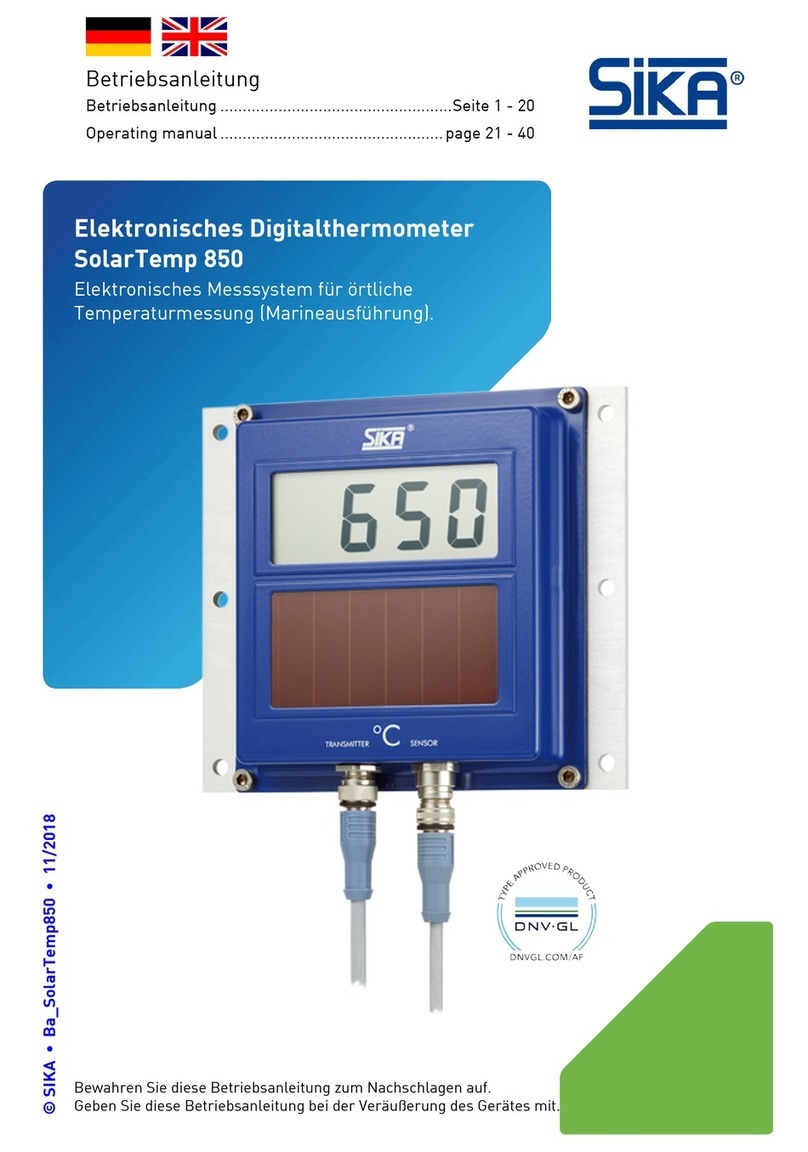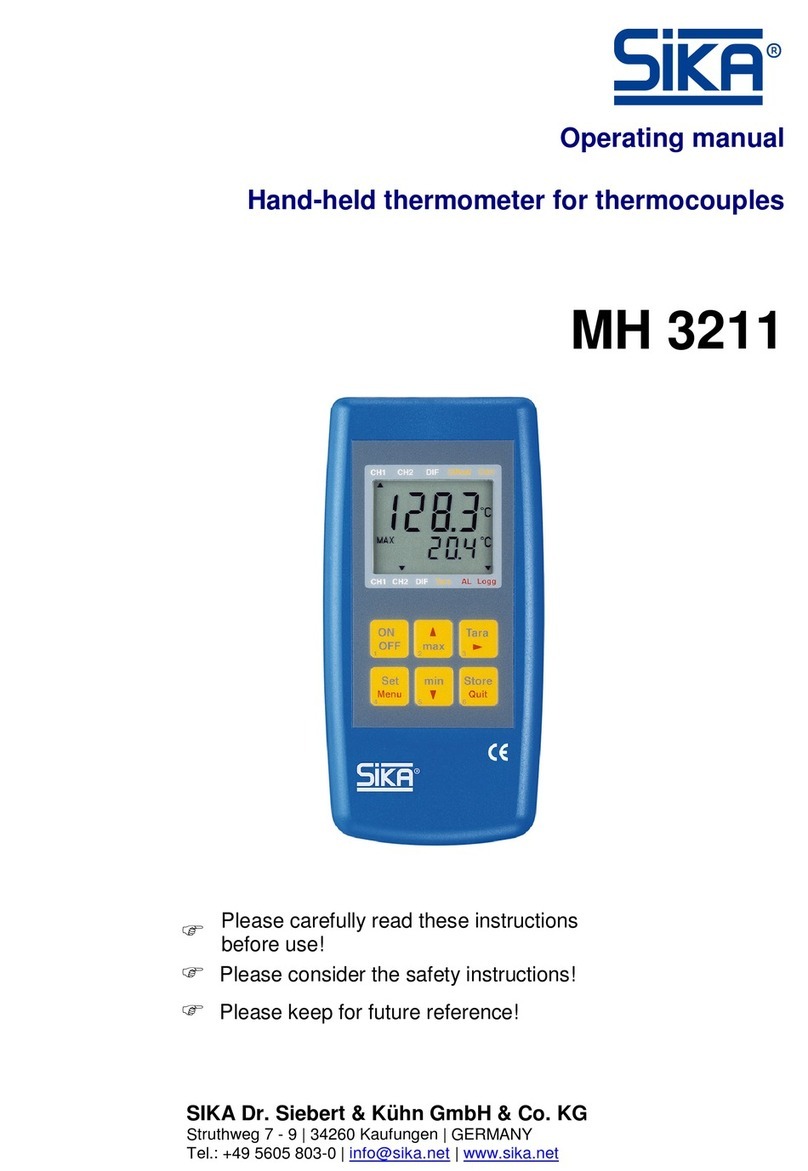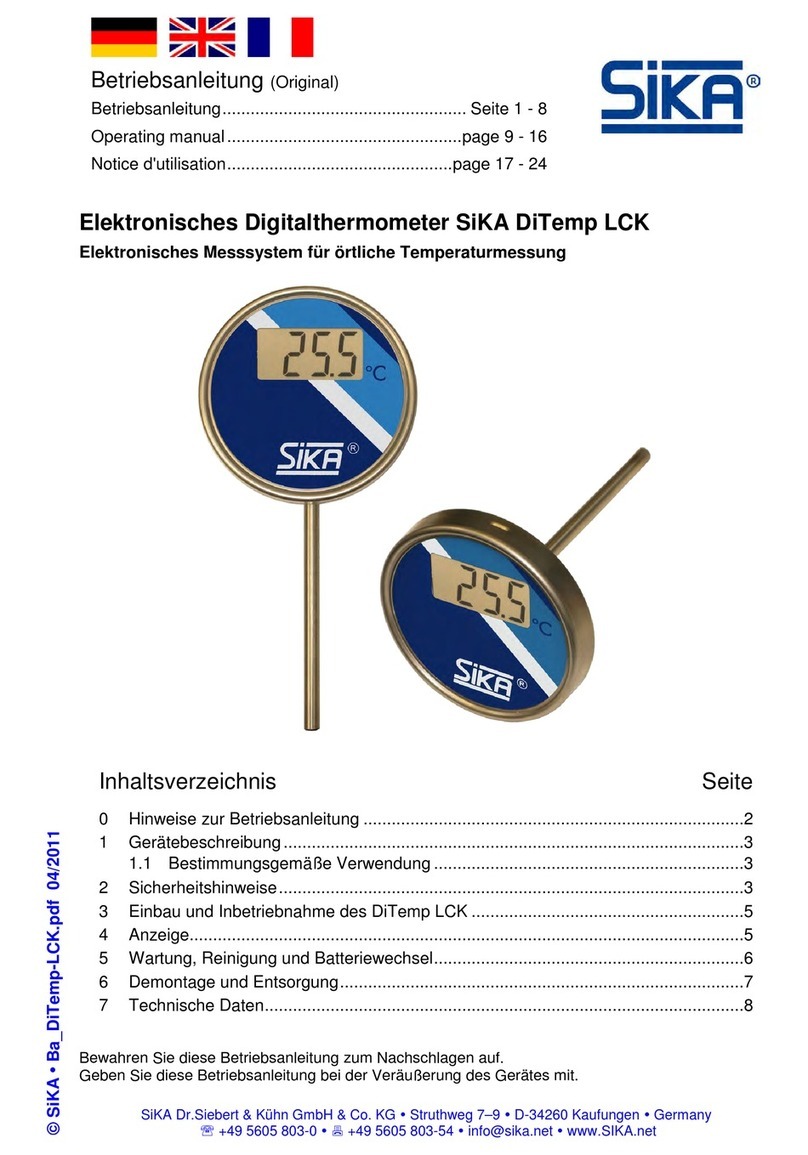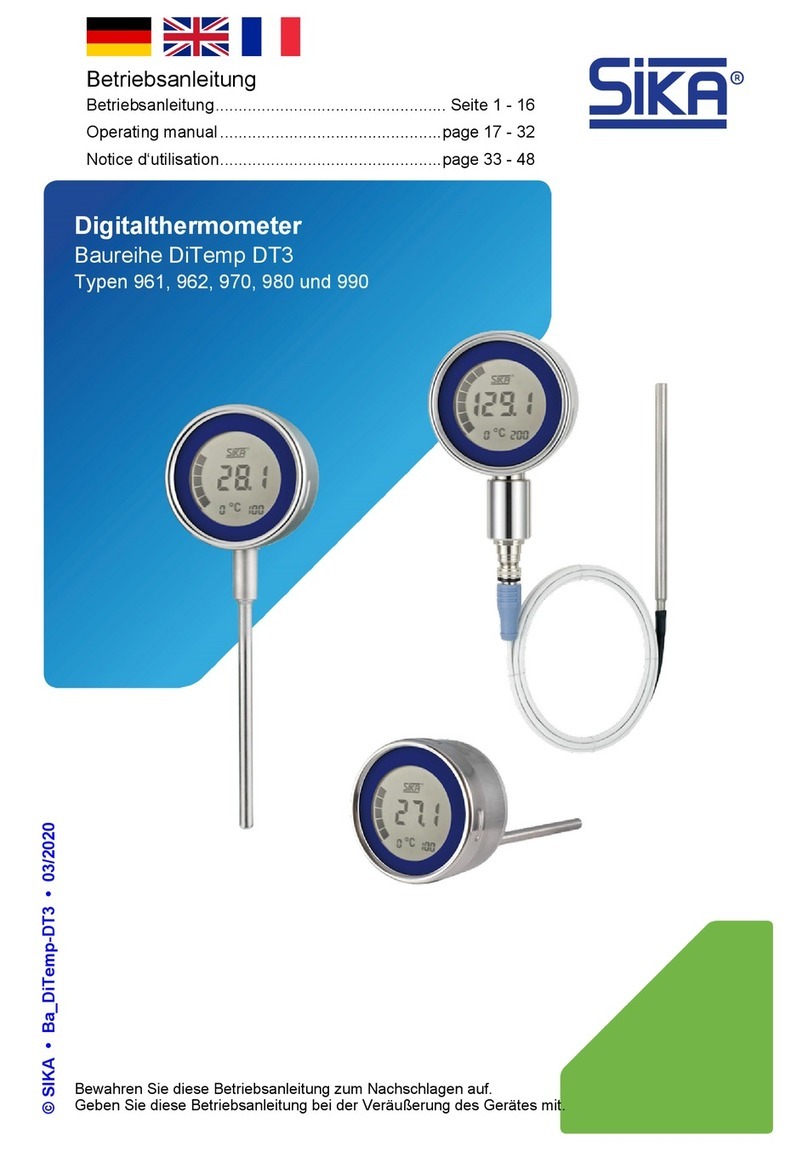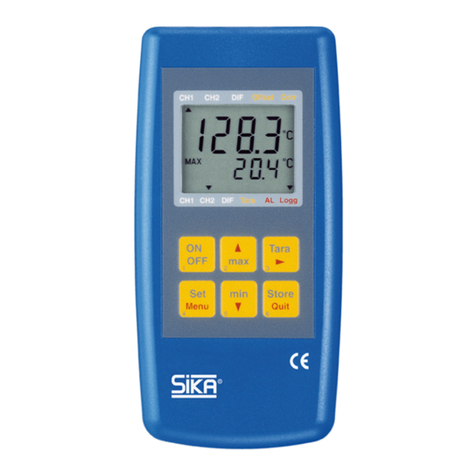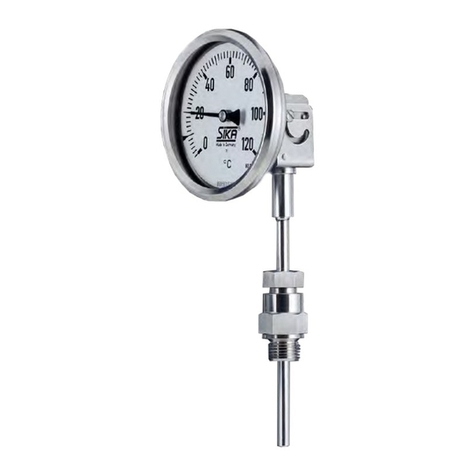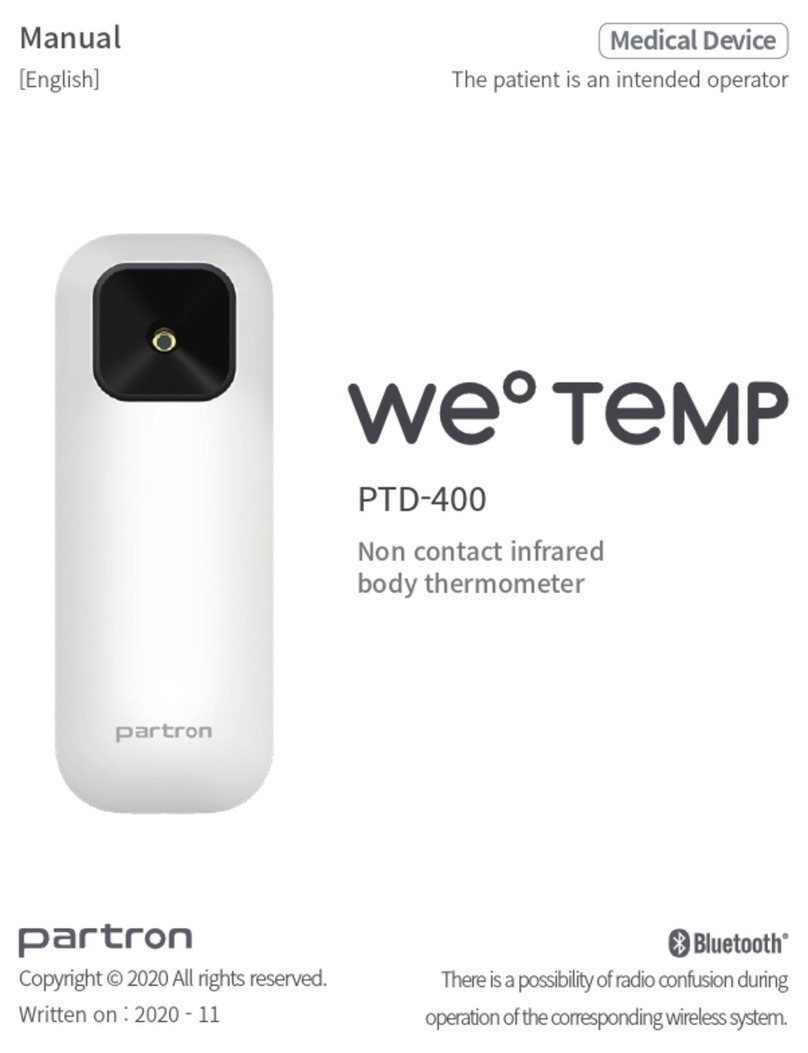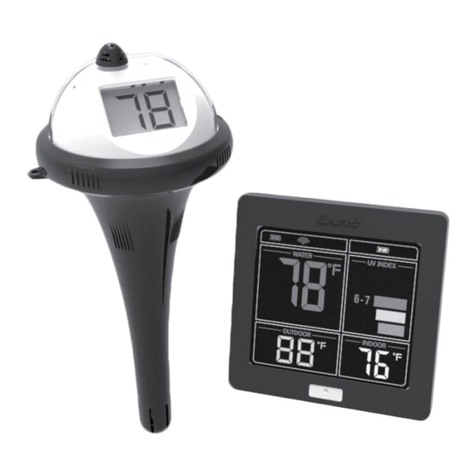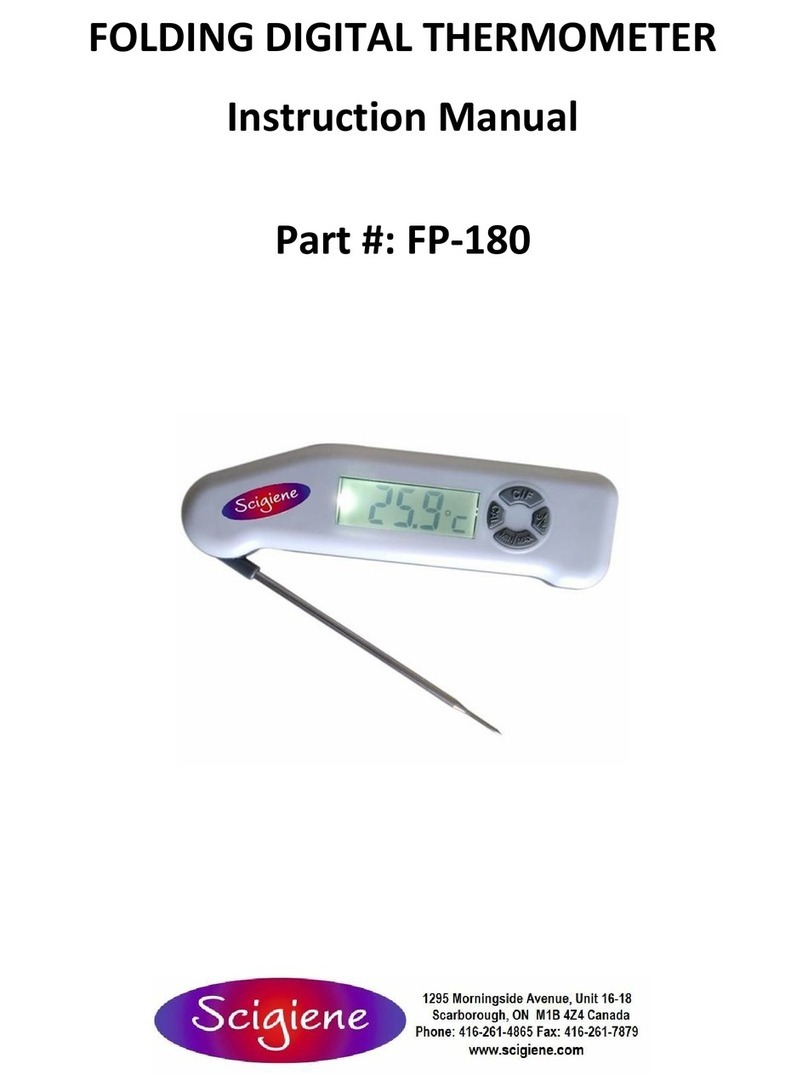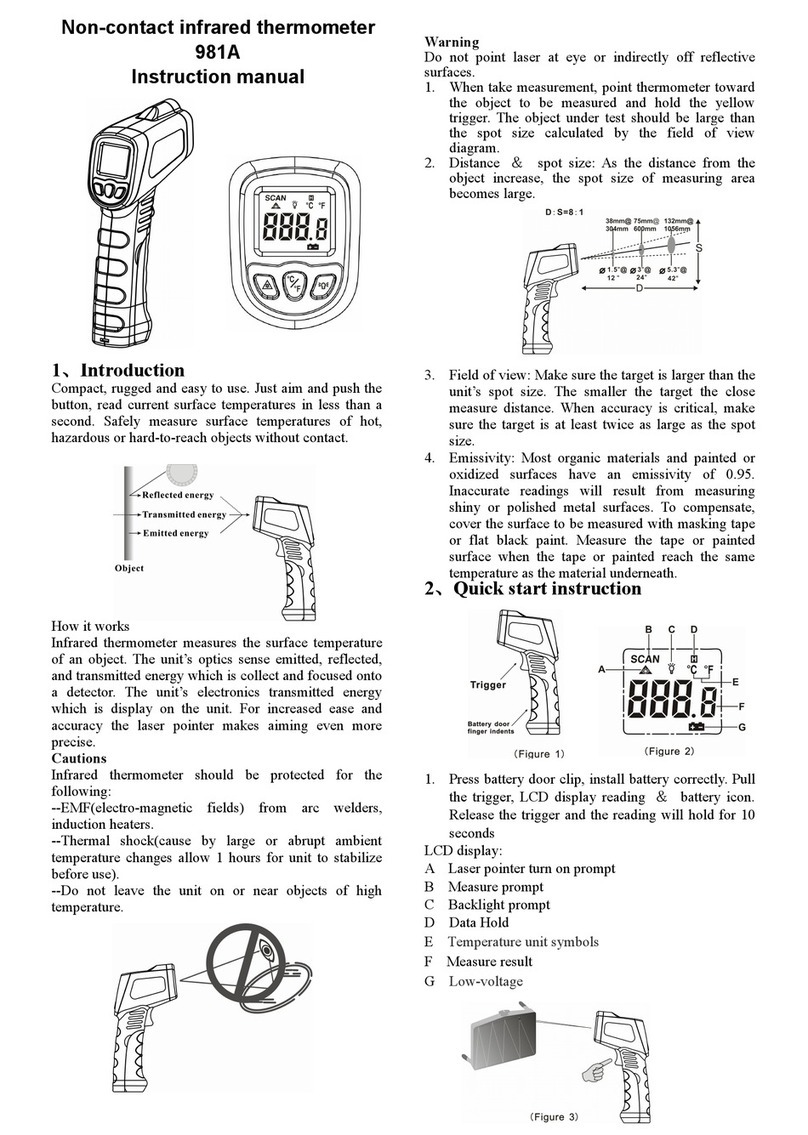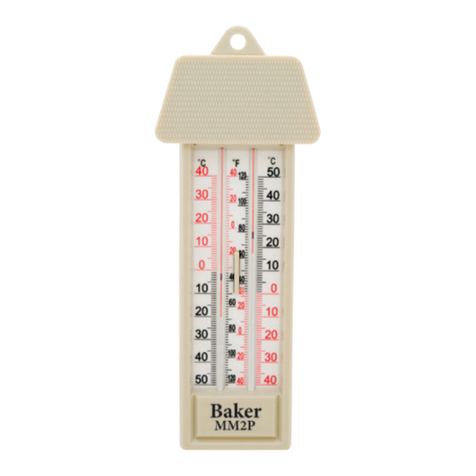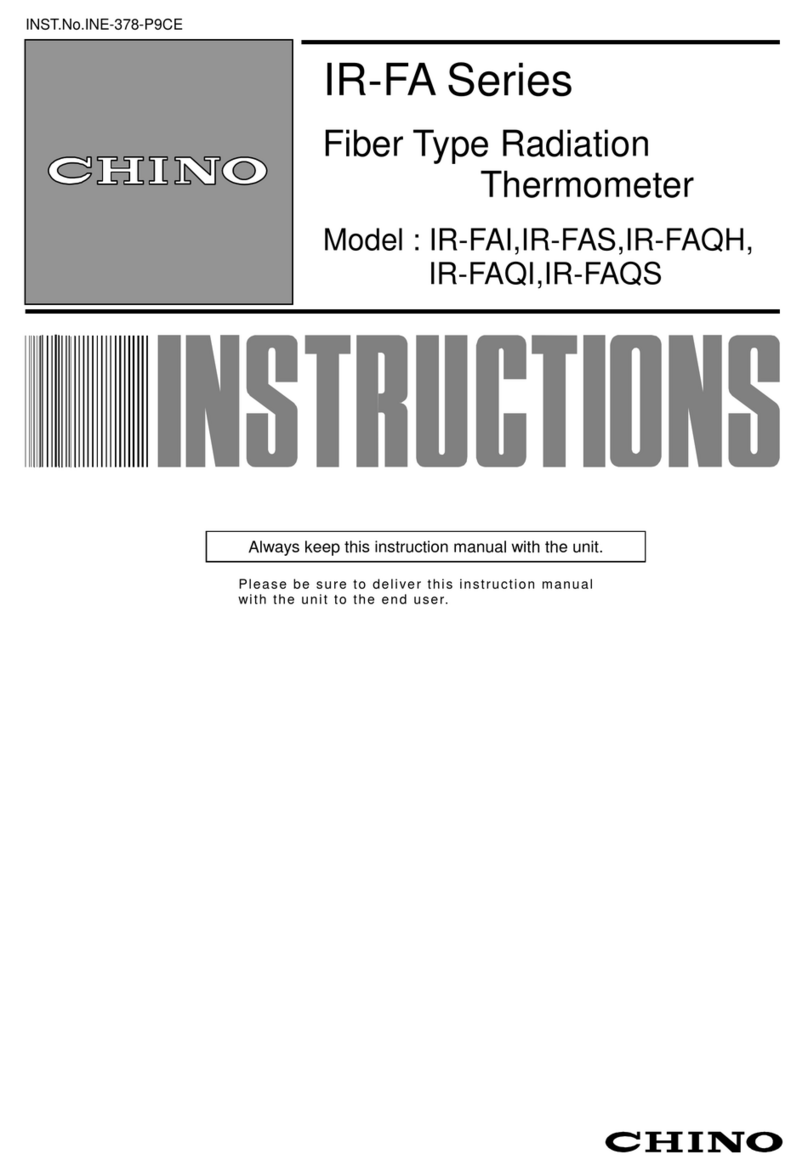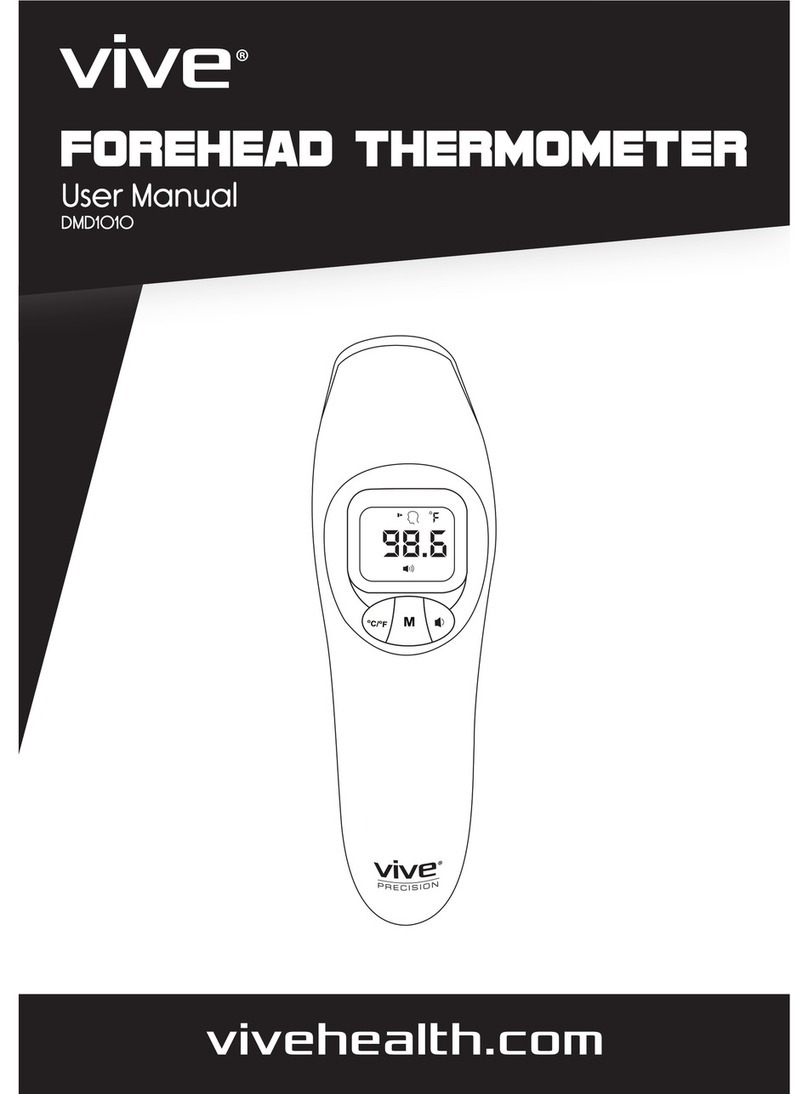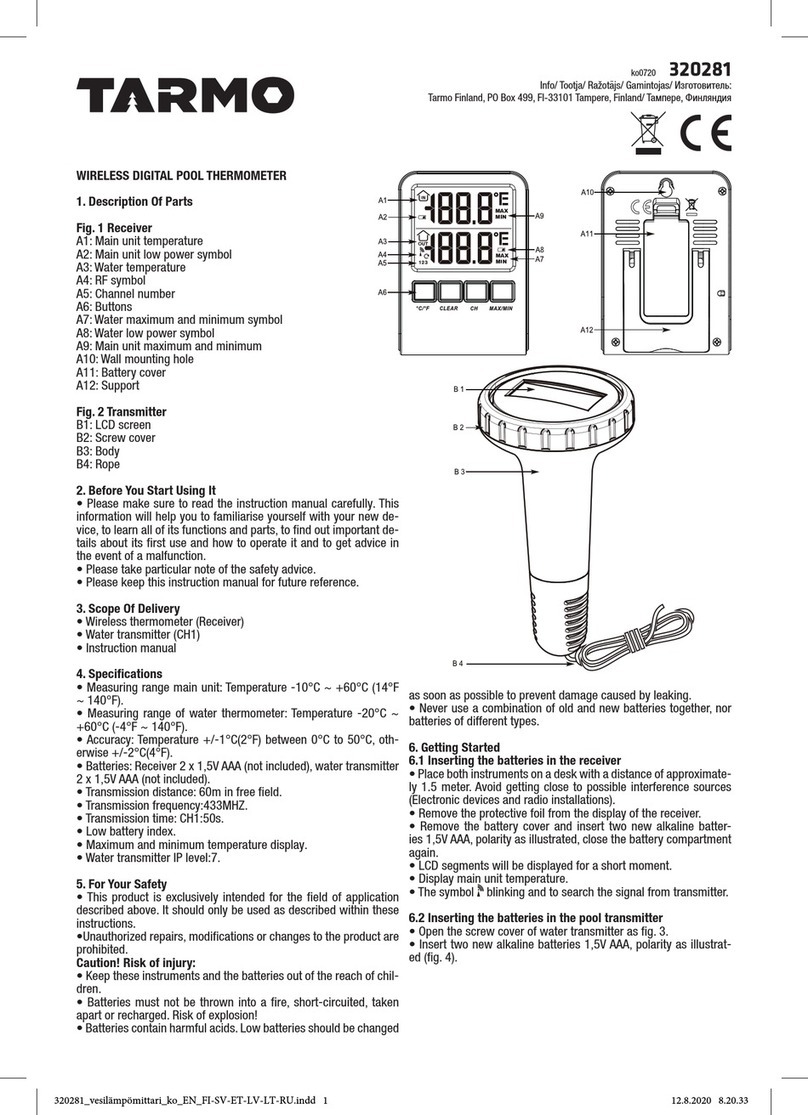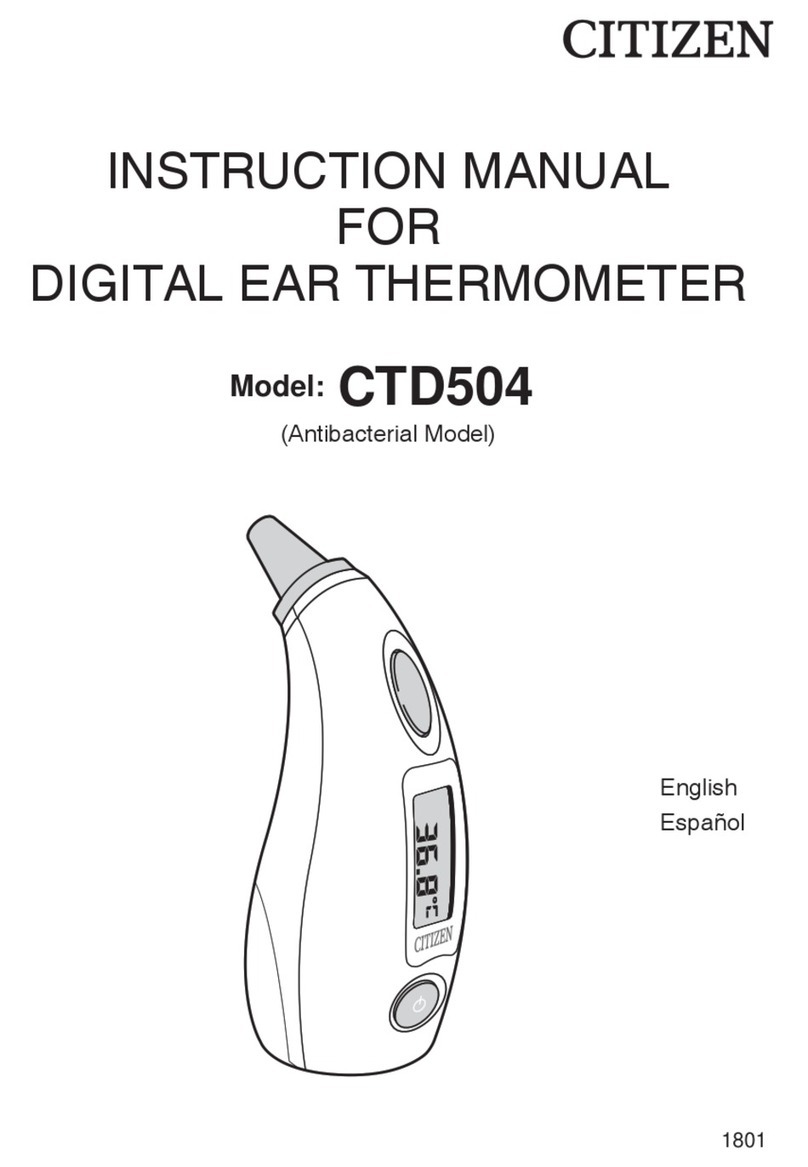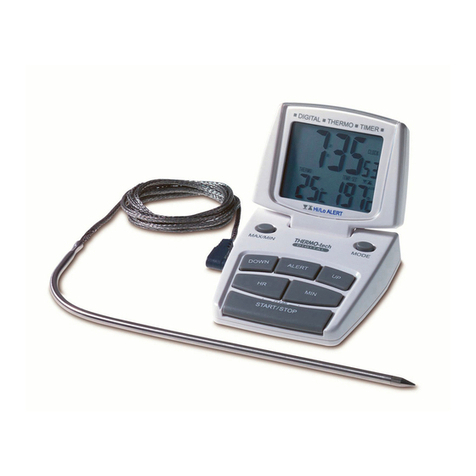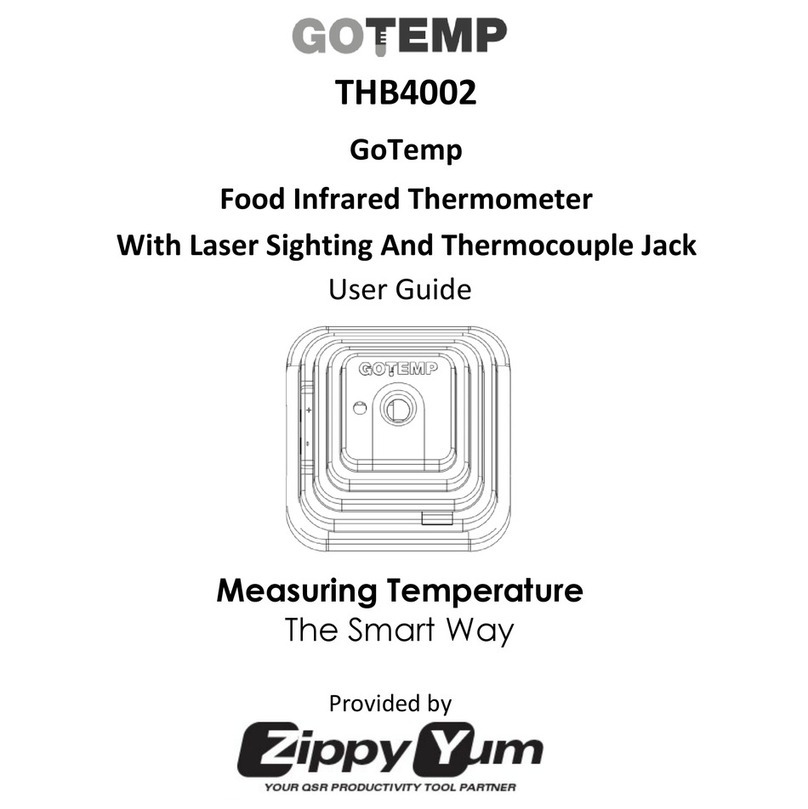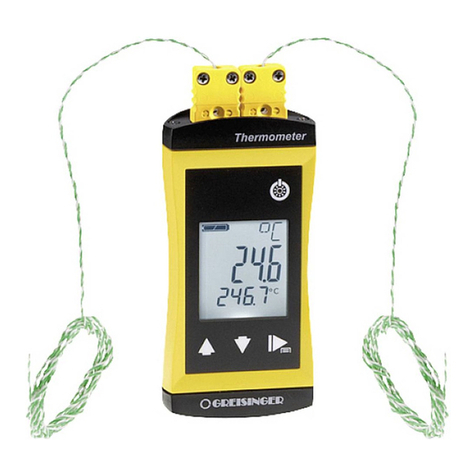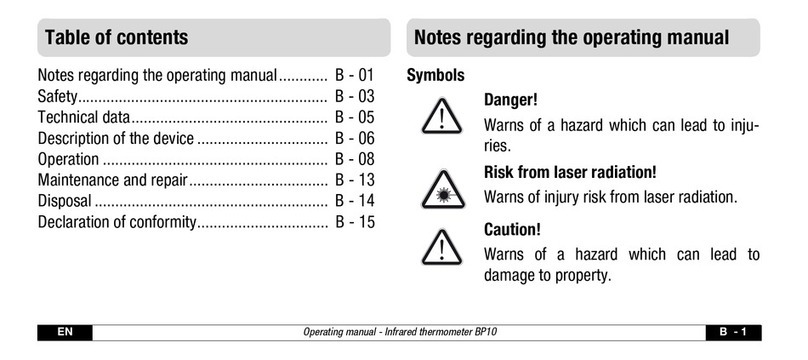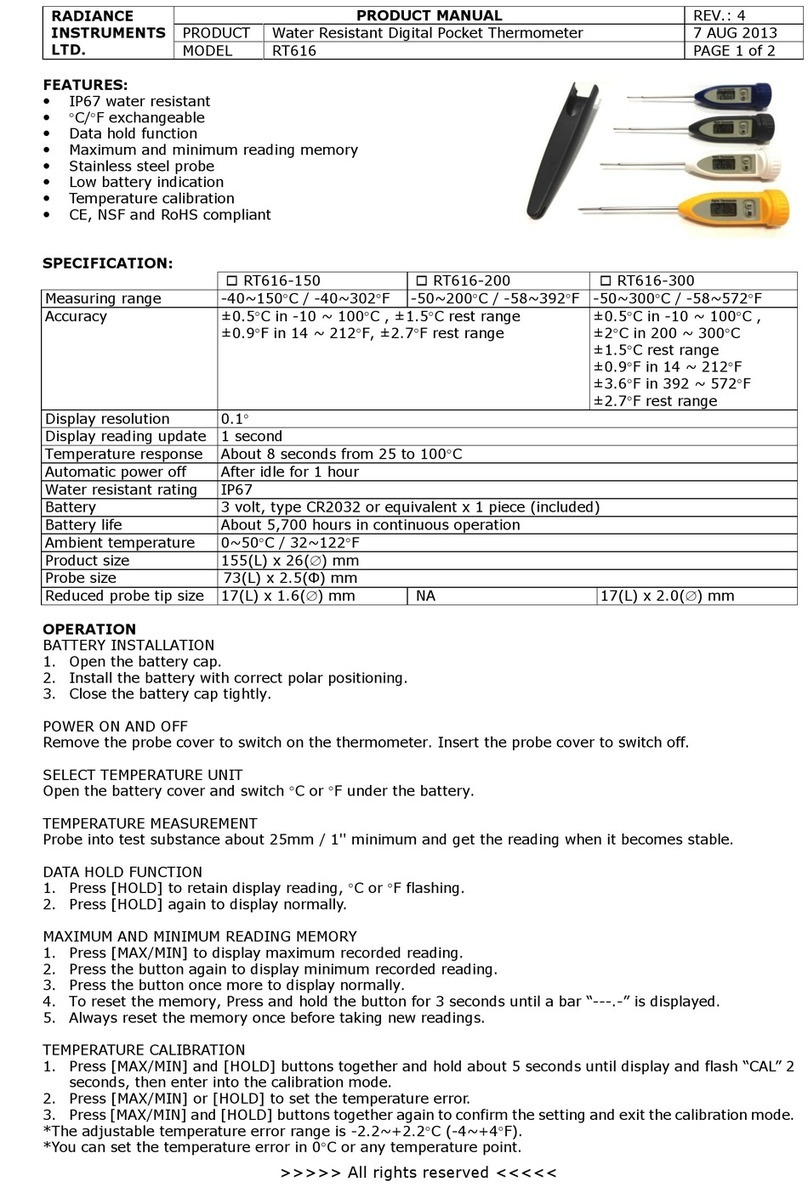
UM RTD.2 About this operating manual
Technical changes reserved - 5 -
Thanks
We would like to take advantage of this opportunity to thank you for choosing this SIKA precision
measuring device, the result of our hundred-year experience in manufacturing top-quality precision
measuring devices.
Consequently, we can continue to pursue this constant innovation policy, which has benefited our us-
ers for over 100 years. SIKA encourages all comments and welcomes any suggestions you might
have in order to allow us to fine-tune our know-how and improve our future products.
LIMITED GUARANTEE and LIABILITY
SIKA guarantees that this product is free of any manufacturing defects under normal conditions of use
and care. The guarantee period is one year with effect from the date of despatch. Parts, product re-
pairs and services are guaranteed for a period of 90 days. This guarantee only applies to the original
purchaser or to the end user if the latter is a distributor authorised by SIKA, and it does not apply to
fuses, inter-changeable batteries or any product which, according to SIKA, has been tampered with,
modified, neglected or damaged by accident or subjected to abnormal conditions of use and handling.
SIKA guarantees that the software will operate for the most part in compliance with the functional
specifications for a period of 90 days and that said software was recorded on non-faulty media. SIKA
does not guarantee that the software does not contain any mistakes or that it operates continuously.
The distributors authorised by SIKA shall apply this guarantee to products sold new and which have
not been used, but they are not authorised to apply an extended or different guarantee on behalf of
SIKA. Guarantee support is offered if the product has been purchased through a sales outlet author-
ised by SIKA or if the purchaser has paid the applicable international price. SIKA reserves the right to
invoice the purchaser the import charges for repaired parts or spare parts if the product purchased in
a country is sent to another country for repair.
The guarantee obligation on the part of SIKA is limited, at the discretion of SIKA, to refunding the pur-
chase price, or to repairing/replacing free of charge a faulty product returned to a service centre au-
thorised by SIKA within the guarantee period.
To benefit from the guarantee service, contact your nearest SIKA agency or send the product, along
with a description of the problem, carriage and insurance paid (free to destination), to your nearest
SIKA service centre. SIKA will not be held liable for any damage incurred during transport. Once re-
paired under guarantee, the product will be returned to the purchaser, carriage paid in advance (free
to destination). If SIKA considers that the problem was caused by misuse, a modification, an accident
or abnormal operating or handling conditions, SIKA shall provide an estimate of the repair costs and
shall only begin the repair work once appropriate authorisation has been received. Once repaired, the
product will be returned to the purchaser, carriage paid in advance, and the repair and transport costs
will be invoiced to the latter.
THIS GUARANTEE IS EXCLUSIVE AND INCLUDES ALL OTHER GUARANTEES, WHETHER
EXPLICIT OR IMPLICIT, INCLUDING, BUT NOT ONLY, ANY IMPLICIT GUARANTEE AS TO THE
SUITABILITY OF THE PRODUCT FOR SALE OR FOR APPLICATION FOR A SPECIFIC END OR
USE. SIKA CANNOT BE HELD LIABLE FOR ANY PARTICULAR DAMAGE, WHETHER INDIRECT,
ACCIDENTAL OR ENSUING, NOR ANY DAMAGE OR LOSS OF DATA, WHETHER FOLLOWING
INFRINGEMENT TO THE GUARANTEE OBLIGATIONS, ON A CONTRACTUAL, NON-
CONTRACTUAL OR OTHER BASIS.
Since certain countries or states do not allow limitations to an implicit guarantee condition, or the ex-
clusion or limitation of accidental or ensuing damage, the limitations and exclusions of this guarantee
may not apply to every purchaser. If any provision set forth in this guarantee is deemed invalid or in-
applicable by a court with jurisdiction, any such decision will not affect in any way the validity or the
applicability of all other provisions.


